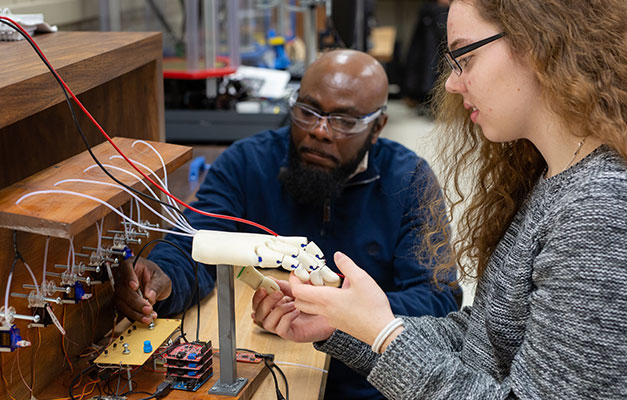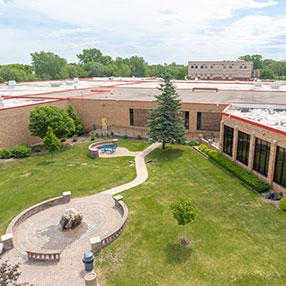
Robotic & Electronic Engineering Technology
Anoka Technical College's Robotic & Electronic Engineering Technology program prepares students to work with mechatronics, robotics, automation and controls, computer servicing and networking and biomedical equipment.
Students gain a thorough understanding of how computers and machines communicate, system level troubleshooting, and a solid education in electronic engineering technology fundamentals.
Why Study Robotic & Electronic Engineering Technology at Anoka Tech?

Affordable education with part-time options

Hands-on education taught by industry experts

100% job placement after graduation
Industry & Career Outlook
Potential Jobs:
- Electronics Technologist
- Electronics Technician
Salary Information:
Median Wage: $35.28 per hour
Top earners: $45.88 per hour
Information provided is for Minnesota. See current data at mn.gov/deed.
Other Program Info
Take a self-guided virtual tour of our campus to see what it's like to be a student at Anoka Tech. View program labs, common student spaces, campus offices and more.
Students can choose to complete any of the electronics programs part-time. Part-time students will take longer to complete their program than students who follow the full-time sequence listed on the official program guides. Because every course may not be offered each semester, it is important for part-time students to reach out to their faculty advisor for help in planning their long-term, part-time course sequence.
Below, new students can find the first semester part-time course options. After the first semester, work with your faculty advisor to plan future semesters.
Course options may differ depending on whether you plan to start in the fall or spring semester. ETEC courses for new students are not always available in the spring term. A full-time student in any electronics program would take 16 credits their first semester. Part-time students must take a minimum of 10 credits.
Important: Students who place below college-level on the ACCUPLACER tests for Arithmetic and QAS (Quantitative Reasoning, Algebra & Stats) mathematics may benefit from starting with developmental math courses before any ETEC courses.
First Semester
ETEC 1102, ETEC 1113, ETEC 1141
- These 3 courses are corequisites and therefore must be taken together.
- In addition to developmental math courses, AAS degree students starting in the spring semester also have the option of starting with general education courses if no ETEC courses are being offered.
Biomedical Equipment Technician (BMET)
AAS degree
Electronic Technology
Diploma
Special Electronics Technician
AAS degree
Info for Current Students
Students must earn a cumulative 2.0 GPA or higher to be eligible for graduation from this program.
Many of our diploma and AAS degree programs have transfer agreements with four-year institutions.
Start Dates:
Fall semester: August
Spring semester: January*
*Students who start in the spring will need more time to complete due to course prerequisites.


